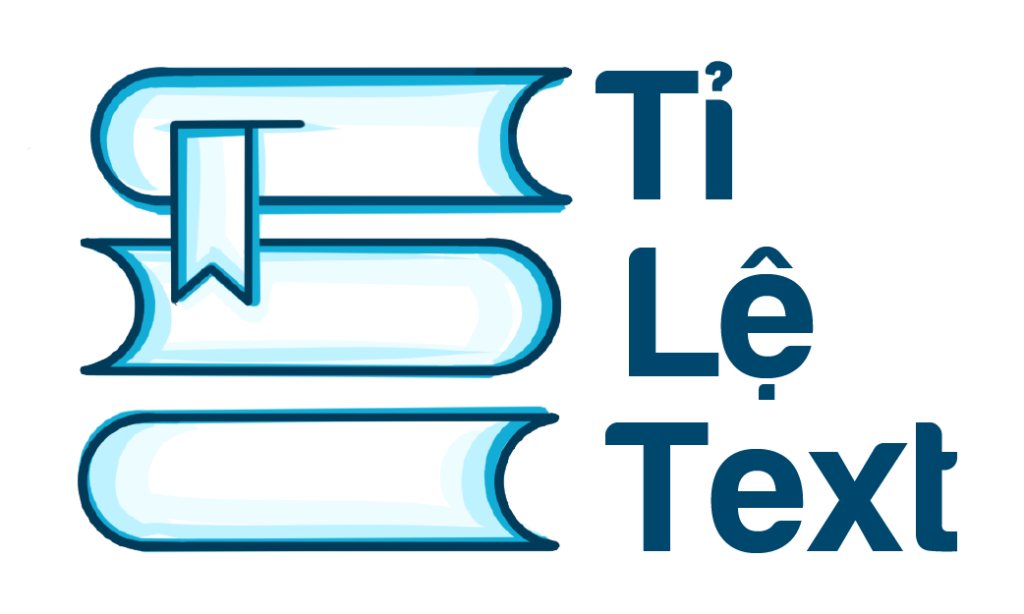Bạn đổ công sức xây dựng nội dung, thiết kế website lung linh, nhưng không phải trang nào cũng mang lại kết quả như mong đợi? Một số trang có thể đang “ngủ đông”, tiêu tốn tài nguyên mà không tạo ra traffic, khách hàng tiềm năng hay doanh số.
Với sự trợ giúp của trí tuệ nhân tạo, bạn có thể nhanh chóng xác định những “điểm yếu” này. Bài viết này sẽ tiết lộ 10 câu lệnh ChatGPT đơn giản nhưng cực kỳ hiệu quả, giúp bạn đào sâu vào dữ liệu (mà bạn cung cấp hoặc phân tích dựa trên nguyên tắc chung) và phát hiện chính xác những trang web đang hoạt động kém hiệu quả, từ đó mở đường cho việc tối ưu và nâng cao toàn diện hiệu suất website của bạn!
Việc sở hữu một website không chỉ dừng lại ở việc tạo ra nội dung và đăng tải. Để website thực sự trở thành một cỗ máy marketing và bán hàng hiệu quả, bạn cần liên tục theo dõi và đánh giá hiệu suất của từng trang. Các trang hoạt động kém hiệu quả không chỉ lãng phí nguồn lực (thời gian, tiền bạc), mà còn có thể làm giảm trải nghiệm người dùng và ảnh hưởng tiêu cực đến thứ hạng SEO tổng thể.
Tuy nhiên, việc phân tích hàng trăm, thậm chí hàng nghìn trang web để tìm ra “kẻ chậm chạp” có thể là một nhiệm vụ tốn thời gian và công sức. Đây là lúc ChatGPT – trợ lý AI thông minh của bạn – phát huy tác dụng. Mặc dù ChatGPT không thể trực tiếp truy cập dữ liệu Google Analytics của bạn, nó có thể giúp bạn phân tích các bản tóm tắt dữ liệu bạn cung cấp, gợi ý các chỉ số quan trọng cần xem xét, và đưa ra các câu hỏi chiến lược để bạn tìm ra vấn đề.
10 PROMPTS ChatGPT Tìm Trang Kém Hiệu Quả Trên Website
- PROMPT 1: “Analyze the aggregated data from my Google Analytics, Search Console, and PageSpeed Insights to identify the 10 lowest-performing pages based on multidimensional metrics (bounce rate, page load time, conversion rate, CTR, and keyword rankings). Then, create a prioritization matrix based on the severity and potential ROI improvement for each page, accompanied by a detailed remediation roadmap for each area: technical structure, UX/UI design, content quality, and SEO strategy.”
- PROMPT 2: “Analyze data from mobile and desktop sessions over the past 6 months to identify pages with the largest performance discrepancies between the two platforms. For each page, conduct a detailed analysis of cross-device compatibility issues, loading speed, user experience, and conversion rates. Then, propose a cross-platform optimization strategy with HTML, CSS, and JavaScript code examples to improve each identified issue.”
- PROMPT 3: “Using user behavior data from heatmaps, recordings, scroll maps, and click maps, identify the top 5 pages with the lowest engagement rates. For each page, conduct an in-depth analysis of distracting UI elements, dead zones, friction points, and user experience issues. Then, design improved wireframes based on behavioral psychology principles and your industry’s best UX practices, accompanied by specific A/B testing recommendations.”
- PROMPT 4: “Perform a comprehensive analysis using SEO audit tools (such as Ahrefs, SEMrush, Screaming Frog) to identify pages with the most critical technical SEO issues. Create a detailed analysis table for each page including: canonicalization errors, incorrect schema markup, improper heading structure, internal linking problems, keyword cannibalization, duplicate content, unoptimized metadata, and missing semantic entities. Propose a comprehensive remediation process prioritized by impact on rankings and workload.”
- PROMPT 5: “Analyze data from Google Analytics 4 combined with my CRM to identify pages in the conversion funnel with the highest drop-off rates. Conduct a detailed analysis of engagement metrics (scrolling depth, time on page, event triggers, form abandonment) and correlate them with user data (demographic, source, device). Create a comprehensive customer journey map identifying key breakage points and propose changes based on the behavior of the customer segment with the highest lifetime value.”
- PROMPT 6: “Analyze the content of the 20 lowest-converting pages on my website using principles of persuasive psychology (such as the Elaboration Likelihood Model, Cialdini’s principles, and the Fogg Behavior Model). For each page, identify flaws in the persuasive structure, lack of social proof, issues with the value proposition, clarity of the CTA, and factors causing users to exit. Propose revisions for headlines, main content, social proof sections, and CTAs based on persuasive psychology principles.”
- PROMPT 7: “Analyze page load performance data from Chrome User Experience Report, PageSpeed Insights, and Lighthouse to identify web pages with the lowest Web Vitals scores. For each page, create a detailed analysis of specific issues (LCP, FID, CLS, TTFB), their root causes, and their impact on SEO and conversions. Create a detailed technical optimization plan including: JavaScript and CSS optimization, lazy loading, image compression, server-side caching configuration, CDN, and database query optimization, with specific code and configurations for each issue.”
- PROMPT 8: “Analyze data from internal site search queries to identify the top 10 most popular queries that do not lead to useful results or have high bounce rates post-search. For each query, propose improvement strategies including: creating new content to meet user needs, improving search functionality, implementing smarter semantic navigation, and taxonomy solutions. Recommend JSON-LD schema markup structure and an internal linking strategy to improve the discoverability of related content.”
- PROMPT 9: “Conduct a comprehensive competitor analysis for the 5 worst-performing pages on my website, comparing them against the top 3 competitors in the same niche. For each page, create a detailed comparison table covering: content structure, keyword density, semantic richness, informational value, user experience factors, backlink strength, social signals, schema markup, and other on-page SEO elements. Based on this analysis, propose a comprehensive strategy to outperform competitors in SEO performance and user experience.”
- PROMPT 10: “Analyze data from various traffic sources (organic search, paid, social, email, direct) for each page on my website and identify the pages with the poorest performance for specific traffic sources. For each page and traffic source, conduct a detailed analysis of content relevance to search intent, landing page relevance to ads or email messages, user experience personalization based on traffic source, and customer journey consistency. Create an optimization matrix for each page and traffic source, with specific recommendations to increase conversion rates based on intent matching and personalization.”
Tips Viết PROMPTS CHATGPT Hiệu Quả
Để tận dụng tối đa sức mạnh của ChatGPT và nhận được những phản hồi chính xác, hữu ích nhất, việc hiểu cách thức hoạt động của nó là rất quan trọng. Dưới đây là những điểm mấu chốt bạn cần lưu ý khi viết prompts, dựa trên cách GPT được huấn luyện:
Hiểu về Dữ liệu Huấn luyện và Cơ chế Phản hồi:
- ChatGPT được “nhồi nhét” một lượng khổng lồ dữ liệu từ sách, báo, tài liệu học thuật, và các website uy tín.
- Phần lớn dữ liệu này là tiếng Anh (~90%), tiếng Việt chỉ chiếm tỷ lệ rất nhỏ (1-2%).
- Quan trọng nhất: Khi bạn hỏi, GPT không đi tra cứu Google. Nó dựa vào “đống dữ liệu” đã học để dự đoán từ tiếp theo một cách ngẫu nhiên.
Yếu tố ngẫu nhiên này giải thích vì sao cùng một câu hỏi, bạn có thể nhận được câu trả lời hơi khác nhau mỗi lần.
Mẹo Thực tế khi Viết PROMPTS:
- Ưu tiên dùng PROMPT tiếng Anh:
Vì kho dữ liệu tham chiếu bằng tiếng Anh là khổng lồ so với tiếng Việt, việc hỏi bằng tiếng Anh giúp GPT khai thác được lượng kiến thức sâu rộng và đưa ra câu trả lời chi tiết, chính xác và phong phú hơn rất nhiều.
- Sử dụng Ngôn ngữ Chính xác và Phù hợp (Đặc biệt là Văn phong Chuyên ngành/Học thuật/Business):
GPT rất “nhạy bén” với các văn phong formal, học thuật, hoặc business writing.
Khi bạn sử dụng từ ngữ chính xác, các thuật ngữ chuyên ngành trong lĩnh vực bạn quan tâm, GPT có xu hướng hiểu ngữ cảnh sâu hơn và “đánh giá cao” prompt của bạn, từ đó tạo ra phản hồi chất lượng, chuyên sâu và đáng tin cậy hơn. Hãy dùng từ ngữ cẩn thận, như thể bạn đang viết một tài liệu nghiêm túc, và GPT sẽ “phản ứng” tương xứng.

